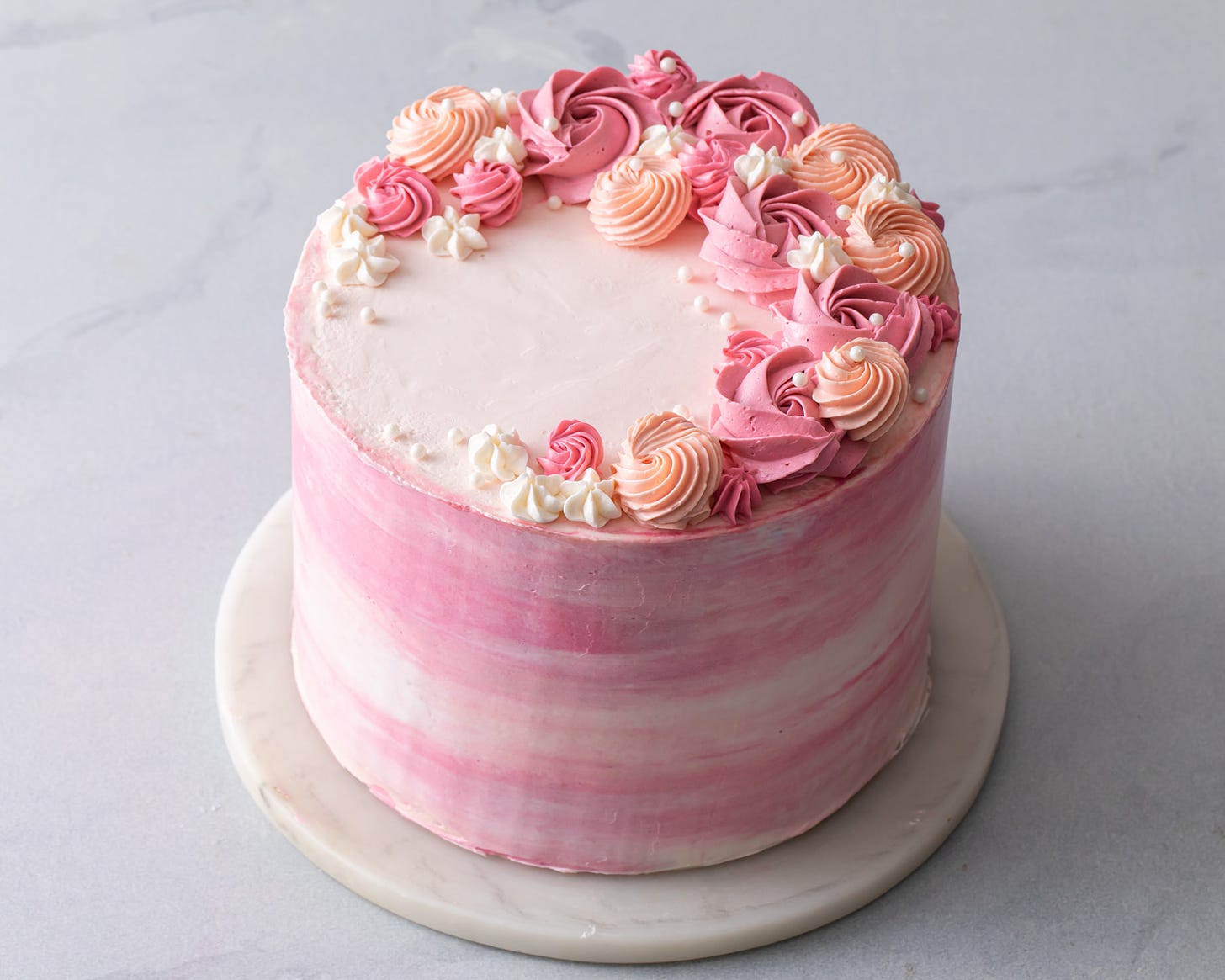Hi Bakers!
I’ve been making and teaching how to create my signature watercolor cake for several years now, and it is still one of my favorite designs.
I love this design for so many reasons. One of the biggest is how different each cake turns out. The way the colors blend together organically means each cake is nearly impossible to replicate or “mess up.” When I’ve taught this design in person, it is amazing to see the students’ different colors and buttercream swirls lined up after class - all as beautiful and unique as the next.
Whether you are a beginner or veteran cake decorator, I also love this this design because it gets the most bang for its buck, so to speak. For the watercolor effect, you will use the same techniques and tools as you would for frosting a smooth cake. By simply changing the colors and intensity, the effect can be easily customized and is effortlessly versatile to create celebration cakes for all occasions.
Tools:
Rotating cake stand
Offset spatula
Gel food coloring
Keep reading with a 7-day free trial
Subscribe to Tessa Huff's Bake Club to keep reading this post and get 7 days of free access to the full post archives.




